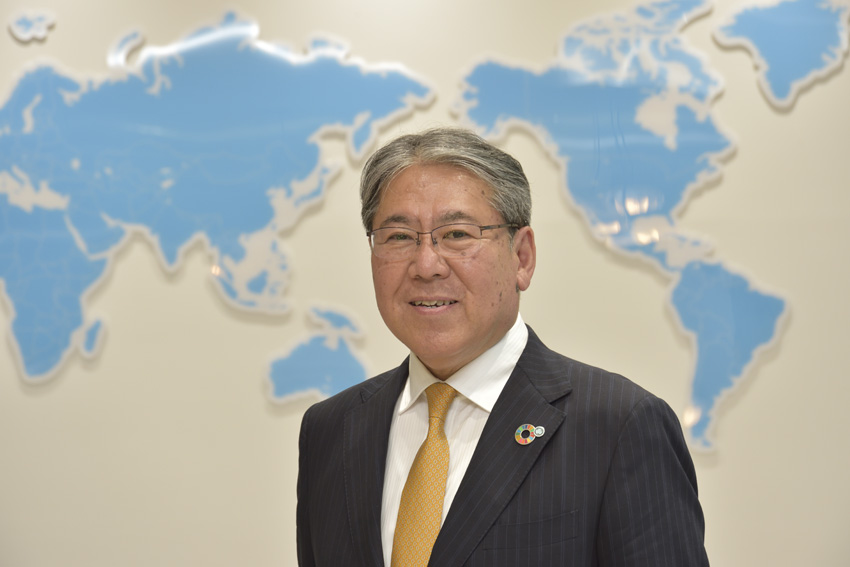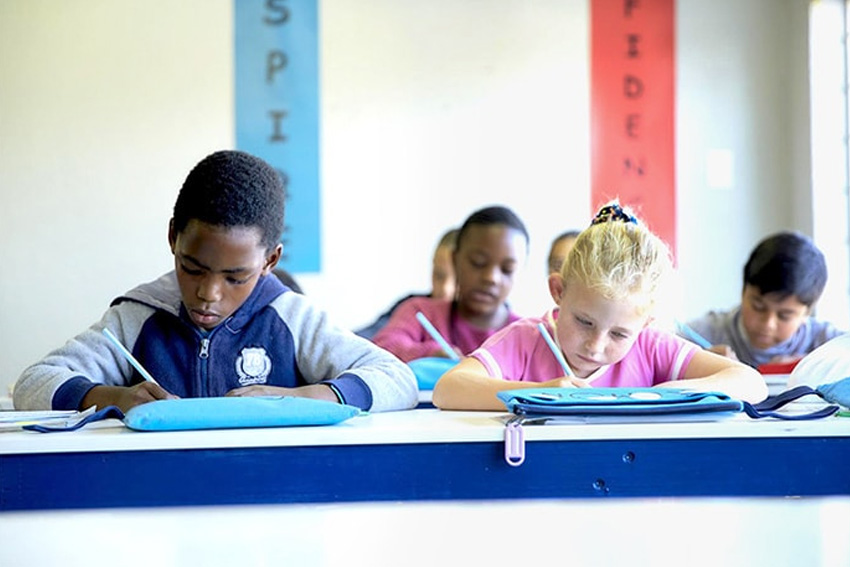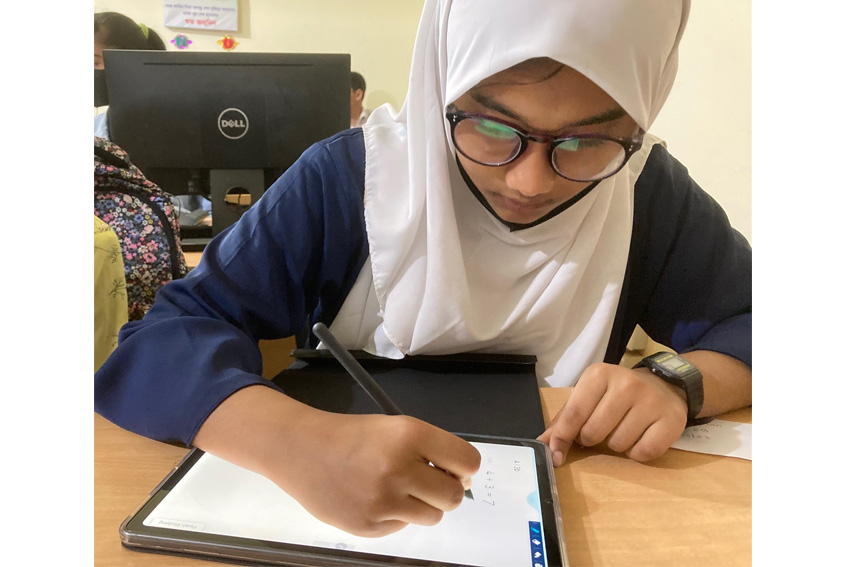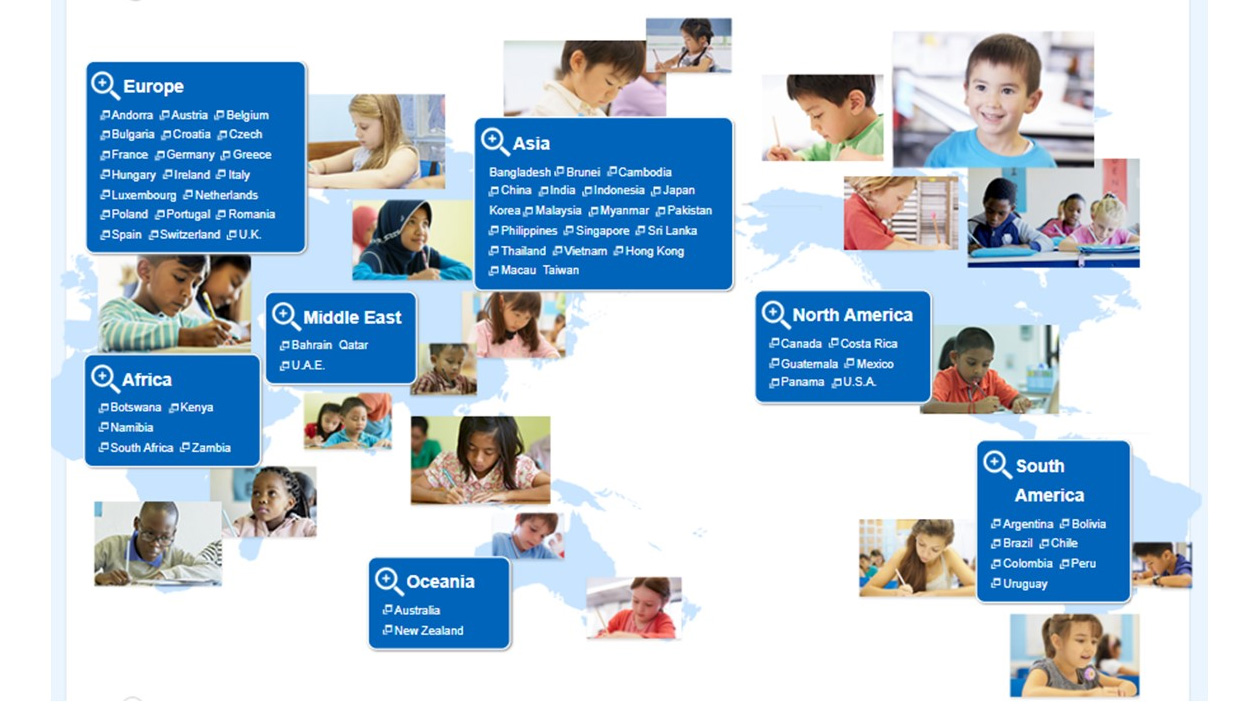From the transformative power of cross-cultural experiences to the evolving landscape of educational technology, the conversation navigates through diverse perspectives on learning methodologies, partnerships, and the future trajectory of education both within Japan and across borders.

With thousands of globally acclaimed institutions and low economic barriers, Japan has long been lauded as an excellent destination for international students seeking to enter the international workforce. However, despite Japan's continued internationalization, COVID-19 and other concerns about language, distance, and long-term employment prospects have led to a decline in international student enrollment. In your view, what do you think is the added value of studying in Japan?
Japanese students often receive their education in the U.S., Canada, or the U.K. Conversely, students from these countries also choose Japan as their study destination. I believe that what is important is not the specific country, but the quality of the institution, lecturers, facilities, and research institutes. In other words, the value of learning is determined by what you learn at which university and with which teacher.
International students have a variety of reasons for choosing where to study, and if, for example, they wish to attend a university with an excellent research environment or to be mentored by a particular professor at a certain university, these choices reflect the expectation that the educational value they seek will be available at that university. Then, what is the added value of studying in "Japan"?
International students who choose to study in Japan will live and engage with the local community and immerse themselves in the beauty of Japan. Their university life also engages them with Japanese history, culture, and society. Furthermore, by interacting deeply with local residents, international students can learn about Japanese values and grow to love the Japanese people. The added value of studying in Japan is nurtured by these rich cross-cultural experiences, and I believe that students grow as human beings through contact with the country, region, and people where they study.
My friends who have studied in the U.S., Australia, Singapore, and Canada often tell me about not only what they learned in college, but also about the countries they studied in and their memories of their friends. I believe that such experiences greatly shape an individual.
Kumon's founder, Toru Kumon, stressed the importance of reading to learn about diverse matters, understand different perspectives, and explore diverse cultures. He also stressed the importance of discovering things one does not know through books. This broad reading experience has a profound impact on one's life, dreams, and aspirations.
The experience of discovery and learning through study abroad, like the experience of reading, will shape your dreams, aspirations, and values for the future through conversations with others, life experiences, and active participation in a variety of activities. While studying abroad in any country can be a fulfilling experience, I would like to speak specifically about the unique educational opportunities that Japan offers.
Exactly 150 years ago, Japan opened its borders and entered the international community. In the 70 years since then, Japan has experienced rising from the aftereffects of war. Japan has a unique history, having emerged from a developing nation and joined the ranks of the developed world while maintaining its identity. Japan is the only country outside of North America and Europe that has achieved this kind of development. I believe that Japan's historical progress can provide valuable insights for developing countries and students from developing countries studying in Japan who are trying to find a way to become a developed country.
Japan is also a very unique and attractive country that has maintained its long history, traditions, and unique culture as an island nation, while at the same time possessing the most advanced technology in the world and becoming an economic powerhouse. One of the attractions of Japan from the perspective of Western society is its history of development as an island nation in Asia, incorporating Western values. For students from developing countries who wish to study in Japan, a deeper understanding of Japanese perspectives, thoughts, and ideas will provide an opportunity to look at their own culture and country from a fresh perspective.
Despite historical difficulties, Japan has achieved significant development. However, an aging and shrinking population has caused a loss of momentum and a period of stagnation, often referred to as the "lost 30 years," in which some companies have been left behind.
Through their studies in Japan, international students will be able to consider the challenges facing Japan, such as the effects of an aging society with a declining birthrate, as future issues for their home countries. Through this experience, international students can observe both positive and negative aspects and learn valuable lessons from their studies in Japan.
In recent years, the introduction of DX technology and the integration of ICT has been changing the education system dramatically. The GIGA School Program, introduced in 2020, is actively incorporating these digital solutions. How do you see DX and ICT shaping the future of education in Japan? What challenges and opportunities do you envision for the adoption of these technologies?
As in other fields, the world of education is integrating with information and communication technologies (ICT) for the future. Education in Japan is no exception. Japan is said to have a handwritten culture, but like many people, I mainly type my texts on a PC and rarely have the opportunity to write by hand. Culture and tradition will not slow the advance of ICT. In considering the use of ICT in education, I think it is very important to understand the limitations of the technology while leveraging its capabilities to achieve results.
The central purpose of education is to develop the individual as a human being and to build character. Although there are many diverse educational systems in the world, I believe they can generally be summed up in three key aspects. The first is the acquisition of knowledge and skills, which historically have been central to education. Today, however, the emphasis is on the practical application of acquired knowledge and skills. In addition, values, morals, respect for others, and independence are now integral components of education. The development of admirable character traits that are essential for personal growth depends more on human interaction than on technology. The role of human beings will not disappear even as ICT is increasingly used in education and even as AI replaces some jobs.
AI is expected to permeate a variety of industries, including medicine, accounting, education, and politics. Right now, I am doing media interviews, and as AI becomes more prevalent, I think there could be AI interviewers within the next 5 to 10 years. In all industries, certain tasks will be replaced by AI. On the other hand, however, there will always remain areas that require human involvement.
In the field of education, ICT is expected to become a valuable tool to support the acquisition and application of knowledge, know-how, and skills. Moreover, in some areas, such as adaptive learning, AI is surpassing our human efforts, as it is increasingly able to tailor questions to the learner's proficiency level. However, even though technology is advancing by leaps and bounds, there are fundamental limitations, and I believe that there will remain areas in the field of education where only humans can do this.
At KUMON, while recognizing the limitations of DX and ICT, we are moving forward to actively utilize its positive aspects. We are currently in the process of integrating ICT, including making tablet devices available for learning.
Traditionally, our approach has been to provide students with paper worksheets to solve problems. Now we make accurate learning content available on tablets, giving learners the flexibility to choose between traditional paper and digital methods. The only difference is whether the tool used is a pencil or a stylus pen; the learning content is the same.
It may be difficult to tell the difference between paper learning and tablet learning just by looking at them. The major advantage of tablet learning is the sharing and use of information. When using tablets, the data generated is valuable information that can be stored, shared, and used to communicate with others. Tablet data can be shared with parents or used by instructors to instruct students. The digital method has great potential in that such data could be used as big data.
Implementing digital tools represents a huge leap forward for us. It will improve efficiency, provide more learning opportunities, support instructors, and enhance the overall quality of our services. For us at Kumon, we see this as an opportunity for further development in the future.
There are many educational institutions, both in Japan and abroad, that claim to have the best educational methodology. Montessori education, for example, focuses on students' natural interests and activities rather than formal teaching methods. What is the difference between Kumon and other alternative schools? What is the Kumon Method? How is it superior to other traditional educational methods?
Montessori education stands out as a wonderful method, and educators who espouse its philosophy believe it is the best in some areas. In education, there are three main types of education: traditional education provided in schools and other public educational institutions, alternative education such as Montessori and European Steiner education, and supplementary education in schools as seen in Japanese cram schools. I believe that alternative education often develops its own innovative educational methods and means and manages schools and educational institutions that implement these methods.
Most of the more than 50,000 tutoring schools in Japan are not alternative education institutions, but rather supplementary institutions that specialize in preparing students for entrance exams, an important aspect of the Japanese education system.
KUMON is neither a school alternative nor a supplement. It stands in a very unique position, not fitting into any of these categories.
Kumon's founder, Toru Kumon, said, "The Kumon Method is a family education. The Kumon Method, which was born from the educational practice of one father for his child, is built on the concept of "family education. The Kumon Method is based on the universal desire of parents, regardless of country, region, economy, or social status, to provide their children with a quality education, to develop their abilities to realize their dreams and goals for the future and to foster a rich personality. The Kumon Method aims to support parents' education as a philosophy that resonates with diverse cultures.
Operating in more than 60 countries and territories worldwide, Kumon supports the education parents want for their children through the Kumon Method.
The Kumon Method is unique in two ways. First, it has developed a unique educational program that is not influenced by the local curriculum. The second characteristic is personalized learning. The Kumon Method employs a self-learning style that allows students to progress at their own pace. In a simultaneous class system at school, students in the same grade level are expected to learn the same content at the same time. Even the best students must keep up with the overall pace of learning, and students who fall behind must attend classes without understanding the content. This uniformity in teaching is seen not only in schools but also in private education. I believe that the Kumon Method of personalized education is a unique educational method that sets itself apart from this.
My intention is not to compare which is the better education, but to let the reader know the values and features of the Kumon Method. Regardless of cultural backgrounds, parents around the world share a common desire for their children's academic achievement and growth. The Kumon Method supports learners who want to go further in their studies than they did in school, while at the same time providing full support for those who are falling behind in their studies so that they can overcome their challenges. Along with the educational method, another feature of Kumon is the continuous training of Kumon instructors.
Kumon Instructors strive to continually improve the Kumon Method of teaching by listening to and actively learning from children. Continuous learning among instructors makes the Kumon Method more effective, and Kumon is unique in that it is a global community of approximately 20,000 instructors working together, learning from each other, and sharing insights. This community is what sets the Kumon Method apart.
Another outstanding aspect of the Kumon Method is its simplicity. All you need to start a Kumon classroom anywhere in the world is the learning materials, a trained local instructor, and a classroom. Within six months of the start of learning, visible results can be seen. This simplicity makes the Kumon Method a familiar option for improving children's basic academic skills, especially in regions with difficult educational environments, such as developing countries, including Africa. Although the Kumon Method cannot meet all educational challenges, it is an education that improves students' basic academic skills in reading, writing, and calculating, as well as their ability to learn on their own, and helps them discover their hidden potential that they may not have realized. As their abilities improve, students will be able to tackle a variety of tasks. By combining Kumon learning with education at school, children's educational experience is further enriched.
Finally, I would like to add that the Kumon Method is the only educational service recognized by Japanese industry as a Japanese innovation on par with video game consoles, Walkman, bullet trains, and hybrid cars. Kumon is the only service industry in Japan that has succeeded in expanding globally in the difficult field of education.

What role do partnerships play in your company's business model? Are you currently looking for new partnerships abroad?
While we are proud of Kumon's excellent educational methods, we have limited information on the specific educational situation in each country and region. Therefore, we believe it is important to build cooperative relationships with partners who are familiar with local education. Currently, Kumon centers overseas are operated on a franchise basis. However, it is also true that it is difficult for franchised centers alone to sustainably deliver the Kumon Method to students from economically disadvantaged families. This is where local partners become important. In this sense, Kumon is a company that has always valued partnerships with people and organizations that have the ambition to contribute to the community, country, and society through education.
Our partners come in many forms, and government agencies are among our main collaborators. For example, we used to have a partnership with the Ministry of Education in Abu Dhabi. In other cases, we work with local private educational service providers to create an enabling environment for the Kumon Method. In addition, we work with non-governmental organizations (NGOs) and other organizations that can effectively implement the Kumon Method.
One notable success story is our collaboration with BRAC in Bangladesh. BRAC, a global NGO in Bangladesh, expressed interest in providing the Kumon Method to Bangladesh children when the chairperson of BRAC visited Japan in 2013. We are now actively engaged in a partnership with BRAC.
As one of the poorest countries in the world, Bangladesh faces the challenge that many children are unable to attend public school. As a successful social enterprise that generates significant profit, BRAC uses those funds to support education in Bangladesh and help impoverished communities. As part of its support, BRAC has been addressing this issue by operating BRAC schools that are providing free/low-fee education to children, and employment to people in poor communities. Kumon agreed with the idea, but the realistic cost would be prohibitive, so Kumon and BRAC decided to work together on this issue, and a close partnership was born.
There are economically well-off people in Bangladesh who wish to receive Kumon educational services for a fee. We have been providing such people with the Kumon Method by opening Kumon Centers. We started with two company-owned Kumon Centers, under the franchise model, and despite the challenges of the COVID-19 pandemic, we have steadily expanded the number of Kumon Centers and now operate 15 Kumon Centers. Fees are collected in these centers, and the profits earned are used to provide the Kumon Method to students at BRAC schools. This is a long-term plan spanning approximately 20 to 30 years.

Which countries or regions would you like to invest in over the next few years? And how can you adapt your company's education system to each region?
Kumon is working to bring the Kumon Method of learning to all children in all countries and regions of the world through both the franchise model and the licensed model. While we have successfully introduced the franchise model in countries and regions around the world, there is still room for expansion. Depending on the country, the Kumon Centers are approaching both the expansion of existing centers and the introduction of new centers. Our goal is to expand the Kumon Method to more countries and regions.
On the other hand, there are countries and regions where the franchise model is difficult to develop. For example, in Northern European countries, the concept of complementary education is not very attractive because education is free. To overcome these challenges, we are looking for strategic shifts. For example, we are working with regular schools to offer the Kumon Method as an after-school program. In this model, the Kumon Method could be added as an after-school activity option alongside sports, gymnastics, painting classes, etc. The goal is to match the strengths of the Kumon Method with the specific needs and challenges of local residents. The after-school program could be an opportunity for us to expand the Kumon Method.
In addition, we are actively pursuing a strategy of partnering with partners to extend Kumon education to economically disadvantaged children. Based on our successful model in Bangladesh, we have gained valuable insight into working with partners in developing countries. While the Japan-originated franchise model has worked well in Europe, North America, South America, and Asia, we recognize the need to test new methods and explore innovative approaches to effectively launch operations in other regions.
While it may not be possible to do business in a country where war or conflict is taking place, there are opportunities to contribute by working with larger organizations such as the United Nations to help war refugees. For example, we might explore the possibility of providing the Kumon Method in refugee camps, but from a business perspective there might be financial and profit challenges. Compared to paper, I think tablets open up more opportunities for us.

What goals and dreams do you have for Kumon as it celebrates its 65th anniversary?
The Kumon Method is truly an excellent method, and I hope that children around the world will benefit from it and be able to improve their educational situation. Keeping in mind that the Kumon Method is a valuable tool for children facing educational challenges, I am committed to increasing children's access to and use of the Kumon Method. My goal is to find effective ways to spread the Kumon Method around the world and to provide every child in the world with the opportunity to learn through the Kumon Method. This was the dream of our founder,Toru Kumon.
The Kumon Method is an excellent educational method, but of course, the Kumon Method is not the only educational method. We recognize that there are diverse educational methods and understand that no single approach can cover all aspects of learning. Just as computers have an operating system (OS) platform, we believe that the Kumon Method is an educational platform. Our goal is to provide the Kumon Method as an educational platform for children and to become a global educational institution that helps parents and children in each family achieve their goals. Children will be able to further their development by using the Kumon worksheets. We hope to contribute to the global community by sending talented people around the world who have grown up using the Kumon Method.
For more details, explore their website at https://www.kumon.ne.jp/index.html
0 COMMENTS